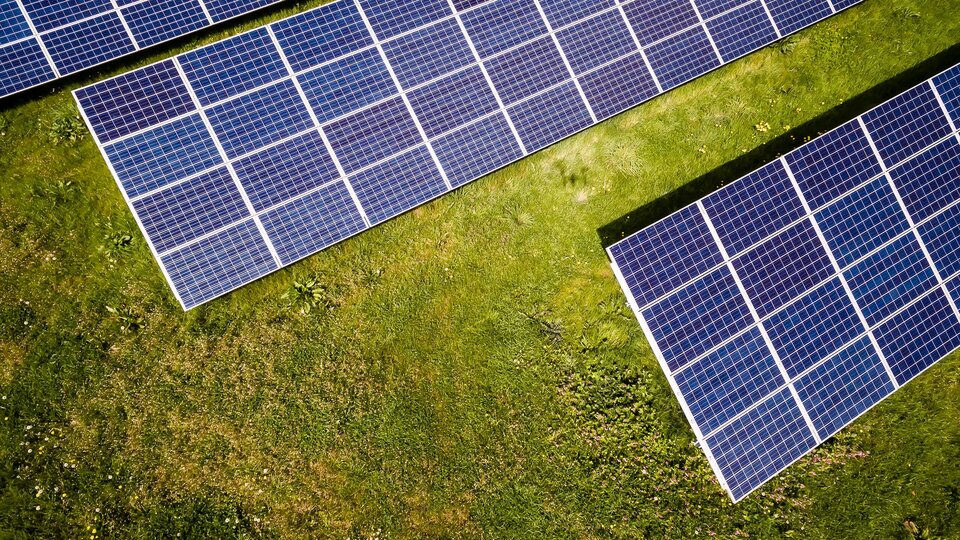Australia’s shift towards renewable energy is accelerating, and at the core of this revolution lies a critical choice: polycrystalline vs monocrystalline solar panels. But, we’re not stopping there. We will also look into how each type pairs with energy storage systems.
This isn’t just about choosing between sleek monocrystalline efficiency and budget-friendly polycrystalline options. It’s about understanding how these solar panels sync up with the rising trend of energy storage, reshaping the energy landscape in households and businesses across the nation.
If you’re interested in exploring your solar options further, consider getting FREE solar quotes from Energy Matters.
Understanding the basics
Let’s take a look at the two different types of solar technology
Monocrystalline solar panels
Consider monocrystalline solar panels the efficiency maestros of solar technology. Crafted from single-crystal silicon, they boast high energy conversion rates, making them ideal for compact spaces and areas with intense sunlight.
Polycrystalline solar panels
Polycrystalline panels use multi-crystal silicon, offering a cost-effective alternative. While slightly less efficient than their monocrystalline counterparts, they shine in versatility and adaptability, excelling in various environmental conditions.
Energy storage systems
Energy storage systems are the linchpin of a modern solar setup. From lithium-ion batteries to advanced storage solutions, they capture and store excess energy, ensuring a steady power supply even when the sun takes a break.
Efficiency in energy capture and storage

When it comes to squeezing every drop of sunlight for power, monocrystalline solar panels take the lead. Their single-crystal precision is the secret sauce, ensuring maximum energy capture.
But the real game-changer? Seamless compatibility with energy storage systems, offering a customised approach to keeping your lights on, even after the sun sets.
However, polycrystalline panels have an adaptive edge. Their multi-crystal dynamics may not match the precision of monocrystalline, but they strike a balance between efficiency and affordability.
Resilience in unpredictable weather patterns
When it comes to these two polycrystalline vs monocrystalline solar panels, how can they weather the storm? Monocrystalline panels are considered to be tough cookies because they can withstand hail, high winds, and extreme weather. They are built to take a beating and keep generating power.
On the other hand, polycrystalline solar panels might not be as tough as monocrystalline in every aspect. However, they’ve got their own set of tricks.
They usually come equipped with sturdy frame constructions, often made from corrosion-resistant materials like aluminium or treated steel. Their frame provides structural integrity, ensuring the panel can withstand high winds and storms.
Technological advancements driving integration
In the fast-paced world of solar technology, innovations are steering the way we harness the energy of the sun. Below are some of the cutting-edge advancements driving the integration of monocrystalline and polycrystalline panels.
- Tandem solar cells: Monocrystalline panels are reaching new heights with tandem solar cells. This innovation involves stacking multiple layers of solar cells, each tuned to absorb different parts of the sunlight spectrum. The result? Enhanced efficiency, meaning more power generated from the same amount of sunlight.
- Advanced energy storage: Monocrystalline panels are not just boosting their own efficiency, they’re also getting chummy with advanced energy storage systems. Through improved compatibility, these panels are seamlessly integrating with the latest storage technologies, ensuring that the power they capture during the day is stored and optimised for use during peak energy demand or when the sun takes a break.
- Advanced in multi-crystal dynamics: Polycrystalline panels are not ones to be left behind. Recent advancements in multi-crystal dynamics are enhancing their energy-capturing capabilities. Manufacturers are tweaking crystal structures and optimising layouts to boost overall efficiency, bringing polycrystalline panels closer to the levels traditionally associated with monocrystalline technology.
- Seamless integration: The technological journey of polycrystalline panels is taking a fascinating turn with a focus on seamless integration. Recent developments are aligning these panels with cutting-edge storage solutions. From grid-tiered systems to home battery setups, polycrystalline panels are stepping up their game, ensuring they play well with the latest storage technologies, and making them a competitive choice in the ever-evolving landscape.
The cost

Compared to monocrystalline panels, polycrystalline panels are generally more cost-effective. This is because the manufacturing process of polycrystalline panels is simpler, which results in lower production costs. This is why polycrystalline solar panels are an attractive option for those looking to invest in solar energy.
The downside is that polycrystalline panels are less efficient than monocrystalline panels. Fortunately, advancements in technology have narrowed the efficiency gap. In areas with abundant sunlight, this could be less significant. And despite its lower efficiency, it can still deliver excellent performance, especially in areas with optimal sunlight exposure.
When it comes to monocrystalline solar panels, they are more expensive because of their higher efficiency, longer lifespan, and sleek design. Their manufacturing process is more complex as it involves cutting a single crystal structure from a silicon ingot.
Despite the higher costs, there are still many homeowners and businesses who find the long-term benefits justify the initial investment.
It is also a preferred choice in areas where space is limited or where maximum efficiency is vital.
Choosing the right fit for your energy needs
Before choosing between these two panels. assess your energy consumption. Analyse your household or business’ historical energy usage patterns, considering daily and seasonal variations. Understanding your energy needs helps determine the right system size and capacity to meet your requirements.
Another thing when choosing between panel types, consider your future plans for energy consumption. If expansion or upgrades are likely, go for a solar system that allows flexibility. Monocrystalline panels may be a better choice if you foresee an increase in energy demand or want to future-proof your installation.
You should also consider other environmental factors and location considerations. For one, evaluate your location’s solar potential by considering factors, like shading, orientation, and potential obstructions.
It’s also important to assess the environmental impact of your solar panel choice. The good news is that both of these panel types are eco-friendly. However, it doesn’t hurt to dig deeper into the sustainability practices of manufacturers and choose panels with lower embodied energy and minimal environmental impact.
Making solar sense
The money talk boils down to this: if you’re okay with shelling out more upfront, monocrystalline solar panels bring the A-game with efficiency and long-lasting perks.
On the flip side, polycrystalline panels are a wallet-friendly choice, but they might not win the marathon.
When we shift focus to long-term gains and cutting those monthly bills, the spotlight leans a bit more on team monocrystalline for its efficiency and endurance.
So, in this solar journey, whether you go high-tech or budget-friendly, remember it’s a roadmap to a sustainable, well-lit future. Choose what fits your today and tomorrow best!







































